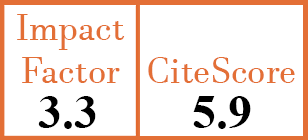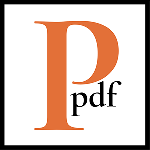Paediatric Rheumatology
Genetic and clinical features of cryopyrin-associated periodic syndromes in Turkish children
F.K. Eroglu1, O. Kasapcopur2, N. Beşbaş3, F. Ozaltin4, Y. Bilginer5, K. Barut6, A. Mensa-Vilaro7, K. Nakagawa8, T. Heike9, R. Nishikomori10, J. Arostegui11, S. Ozen12
- Hacettepe University Faculty of Medicine, Paediatric Nephrology-Rheumatology, Ankara, Turkey.
- Istanbul University, Cerrahpasa Medical Faculty, Department of Paediatric Rheumatology, Istanbul, Turkey.
- Hacettepe University Faculty of Medicine, Paediatric Nephrology-Rheumatology, Ankara, Turkey.
- Hacettepe University Faculty of Medicine, Paediatric Nephrology-Rheumatology, Ankara, Turkey.
- Hacettepe University Faculty of Medicine, Paediatric Nephrology-Rheumatology, Ankara, Turkey.
- Istanbul University, Cerrahpasa Medical Faculty, Department of Paediatric Rheumatology, Istanbul, Turkey.
- Hospital Clinic, Department of Immunology, Barcelona, Spain.
- Kyoto University Graduate School of Medicine, Department of Paediatrics, Kyoto, Japan.
- Kyoto University Graduate School of Medicine, Department of Paediatrics, Kyoto, Japan.
- Kyoto University Graduate School of Medicine, Department of Paediatrics, Kyoto, Japan.
- Hospital Clinic, Department of Immunology, Barcelona, Spain.
- Hacettepe University Faculty of Medicine, Paediatric Nephrology-Rheumatology, Ankara, Turkey. sezaozen@hacettepe.edu.tr
CER8856
2016 Vol.34, N°6 ,Suppl.102
PI 0115, PF 0120
Paediatric Rheumatology
Free to view
(click on article PDF icon to read the article)
PMID: 27191192 [PubMed]
Received: 10/08/2015
Accepted : 05/01/2016
In Press: 10/05/2016
Published: 25/10/2016
Abstract
OBJECTIVES:
The aim of this study was to present the genetic and clinical data of the largest cohort of Turkish cryopyrin-associated periodic syndromes (CAPS) patients.
METHODS:
This is a two-centre descriptive study of Turkish children with clinical diagnosis of CAPS. NLRP3 analyses were performed by Sanger sequencing and by massively parallel sequencing. ASC dependent NF-κB activation and transfection-induced THP-1 cell death assays determined the functional consequences of the detected variants. Disease activity and response to anti interleukin 1 (anti-IL-1) treatment was also assessed.
RESULTS:
Heterozygous germline NLRP3 mutation was detected in 8 of 14 enrolled patients (57.1%). Two novel somatic mutations Y560H and G307D were found which induced both THP-1 cell death and ASC dependent NF-kB activation. With anti-IL-1 treatment the disease activity was improved in all patients except one. Except two patients with macrophage activation syndrome (MAS) attack, there were no serious adverse events requiring hospitalisation.
CONCLUSIONS:
CAPS should be considered in all patients with typical symptoms even if Sanger-based genetic analysis is negative, since a considerable number of patients have mosaicism. Treatment should be patient-tailored and MAS should be considered as a rare complication.


